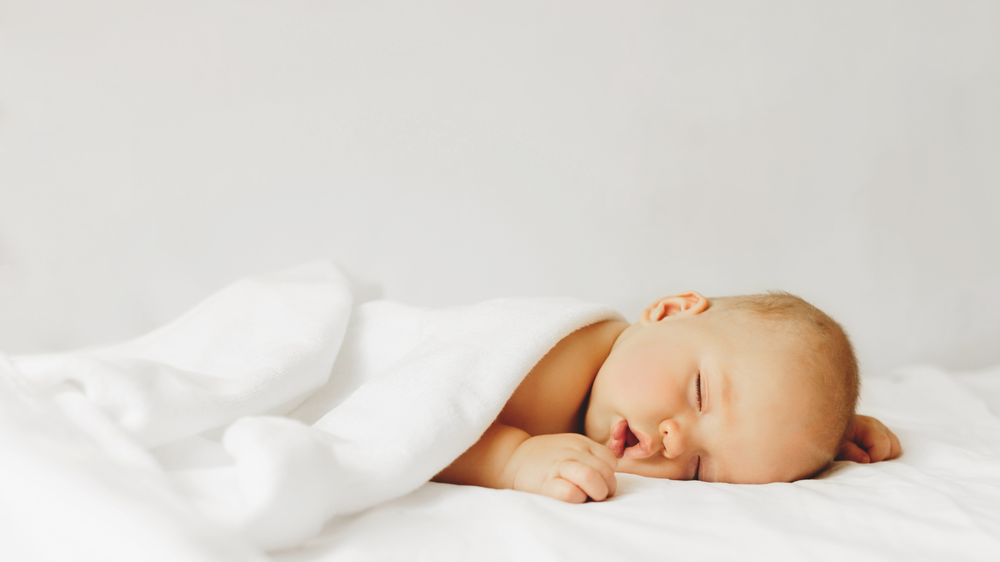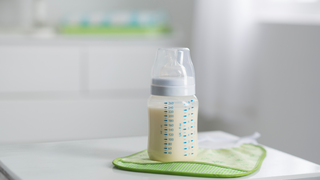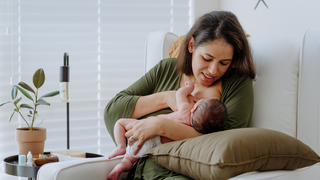In this article:
Remember that your little one doesn’t need just “sleep”, they need “safe sleep”. A secure and nurturing environment is a must to help them breathe, dream, and grow. Thus, understanding safe sleeping practices for babies is crucial to keep such risks at bay.
Let’s discuss the common sleeping practices for babies in Indian homes and the doctor-recommended safety tips to help your baby sleep peacefully.
What are the Common Sleep Practices for Babies in Indian Homes?
In India, parents often use abundant methods to put their babies to sleep. Here are the three common sleep practices followed.Bed Sharing
Also known as co-sleeping, parents often sleep with their babies, believing it will provide them with love and care. Though it strengthens the bond, it may also cause suffocation to your baby. Furthermore, if you accidentally roll over your little one during sleep, it can pose a serious threat to your baby’s life.Tip: Consider a room-sharing arrangement where you can place your baby’s crib next to your bed to avoid suffocation.
Traditional Cradles
Traditional cradles like a “jhoola” are commonly used in Indian households to put a baby to sleep without disruption. Though its gentle swing helps the baby fall asleep quickly, accidentally overswinging it can be dangerous. Furthermore, you may never know when old wooden frames will break.Tip: Never leave your baby unattended, especially in a cradle. Always ensure the jhoola is strong and stable.
Using a Blanket as a Cover
Parents often cover their babies with a blanket to keep them warm and comfortable for a good sleep. But that’s where the problem begins! It may cause overheating and even difficulty in breathing, especially if your little one is entirely covered.Tip: Wear light cotton clothing and maintain an optimal room temperature to beat the heat.
What are the Doctor-Recommended Safe Sleeping Practices in Babies?
Parents want to put their baby to sleep quickly and safely. Here are the doctor-recommended practices to prevent risks and facilitate a sound, safe sleep.Always Put Your Baby On Their Back
When you place your baby on their back (not on their stomach or side), it keeps the air circulation open, which eliminates the risk of suffocation and shortness of breath. Furthermore, don’t put toys or a pillow around your baby. These things can accidentally cover your baby’s face and cause difficulty in breathing.Buy a Firm Mattress
Soft bedding, couches, and cushions can trap your baby’s face, which makes it hard for your little one to breathe. Always use a firm, flat mattress with a fitted sheet to provide extra comfort and prevent suffocation.Maintain an Optimal Room Temperature
Excessive room heat is the biggest contributor to suffocation in babies. Try to maintain an optimal room temperature, i.e., 26-28 degrees Celsius. Use fans or AC (if necessary) to improve airflow throughout the room. Furthermore, don’t overdress your little one.Don’t Smoke Around Your Baby
If you smoke around your little one, you’re unknowingly increasing their risk of suffocation. Remember that your baby is still developing, and when they inhale smoke, their lungs and brain are more likely to be affected. Avoid smoking near your little one and keep the environment smoke-free.Regular Check-ups are a Must
If your child develops a disease, regular check-ups can detect it early and prevent it before it's too late. Maintaining the proper immunisation is crucial to reducing the risk of suffocation or breathing issues. Always conduct regular check-ups of your child to avoid health complications later.Note: If your baby shows unusual sleep patterns, suffocation, or trouble breathing, consult a certified paediatrician or a healthcare professional immediately.
Indian parents often believe co-sleeping is the best way to strengthen the bond with their baby. While it’s traditionally acceptable, it may likely cause severe issues like suffocation, shortness of breath, and SIDS. Always follow the doctor-recommended safe sleeping practices, such as placing the baby on their back, using a firm mattress, and maintaining a comfortable room temperature for sound, safe sleep.
FAQs on Safe Sleeping Practices for Babies in Indian Homes
- Can I use a pacifier for my baby’s sleep?
Yes, you can use a pacifier to help your baby sleep better. However, always consult your paediatrician before using it on your little one. - I love my baby. I want to sleep beside them. Is co-sleeping unsafe?
Co-sleeping is not completely unsafe, but requires strict precautions, like no soft bedding and no heavy blankets. Room-sharing is a better and safer option. - When can I start using a pillow for my little one?
You can start using a pillow when your baby is at least 12-18 months old. However, you still need to check with your paediatrician to get better guidance on using a pillow.






